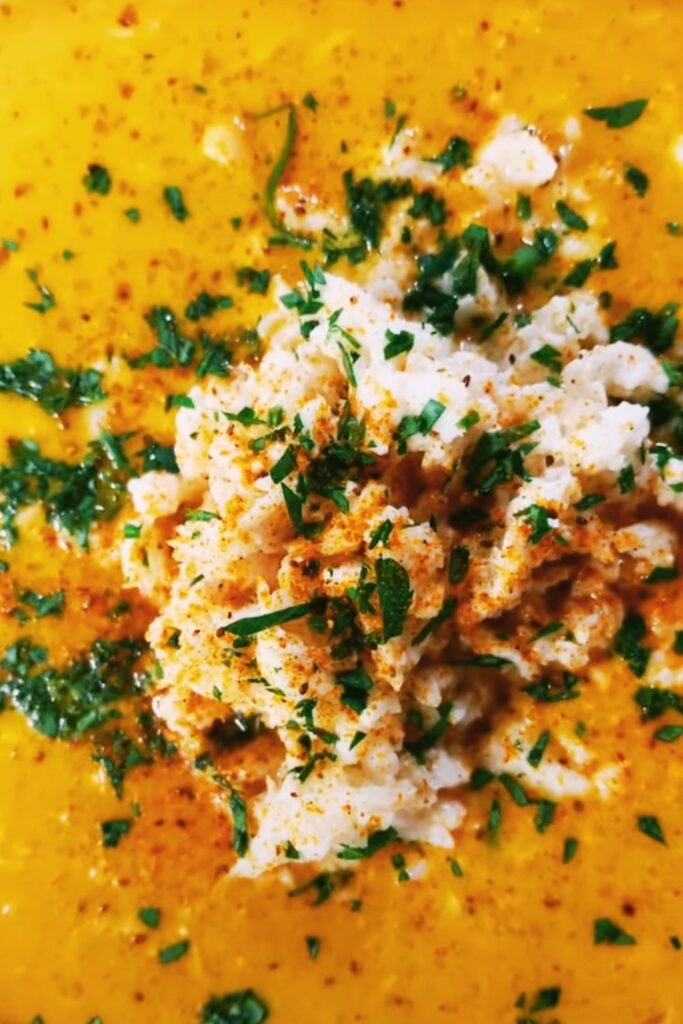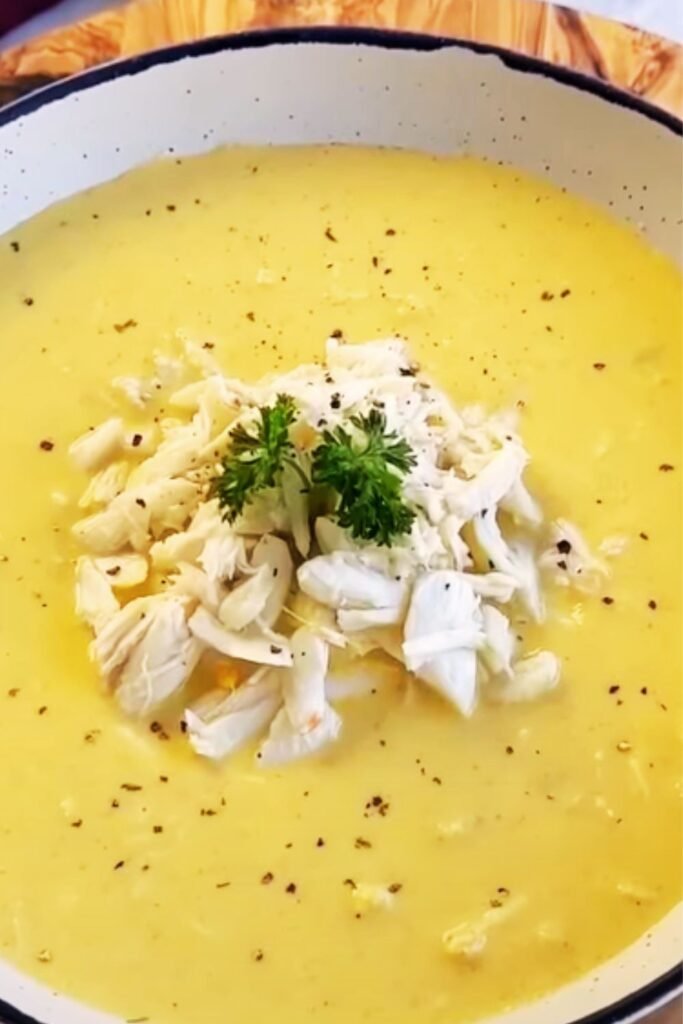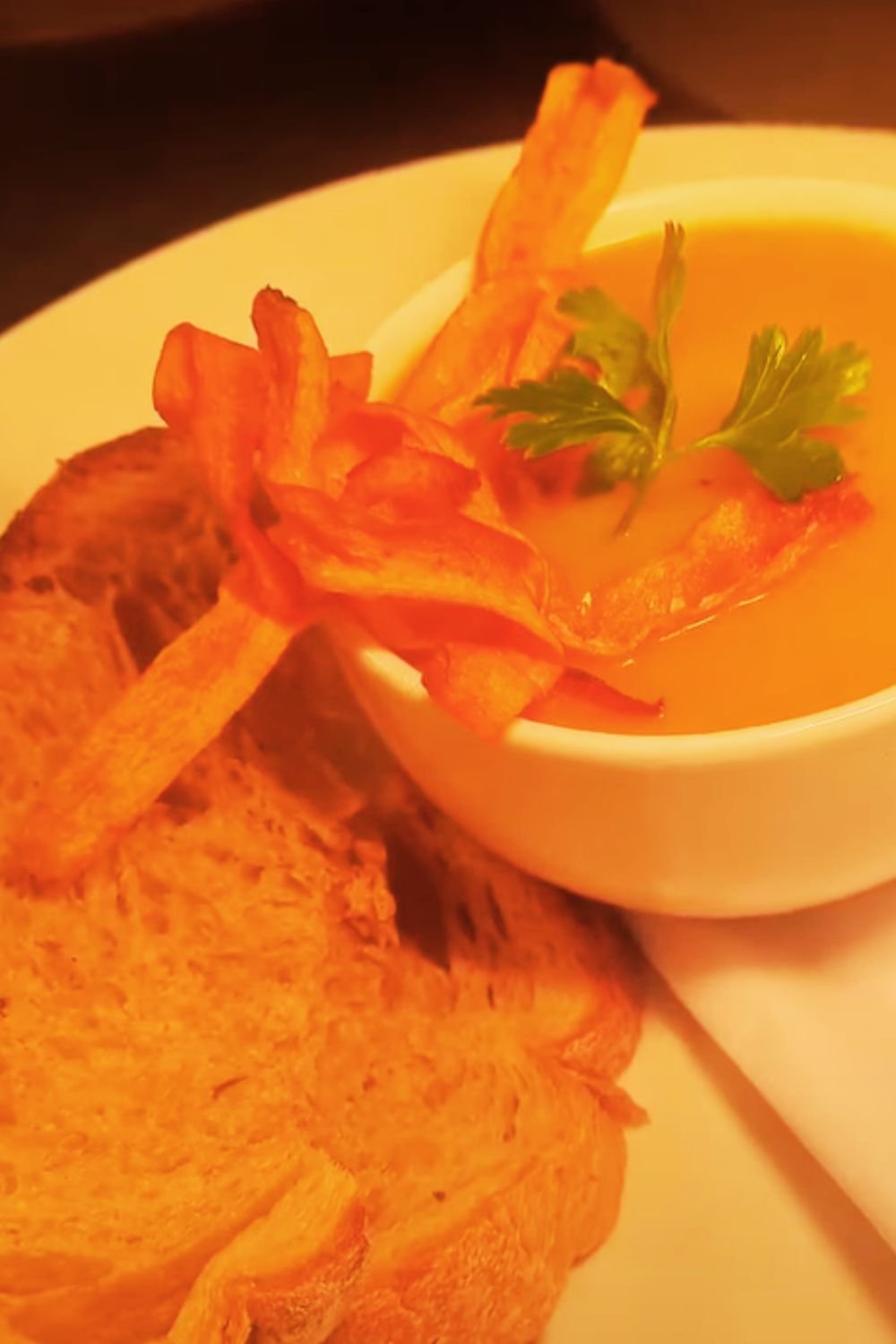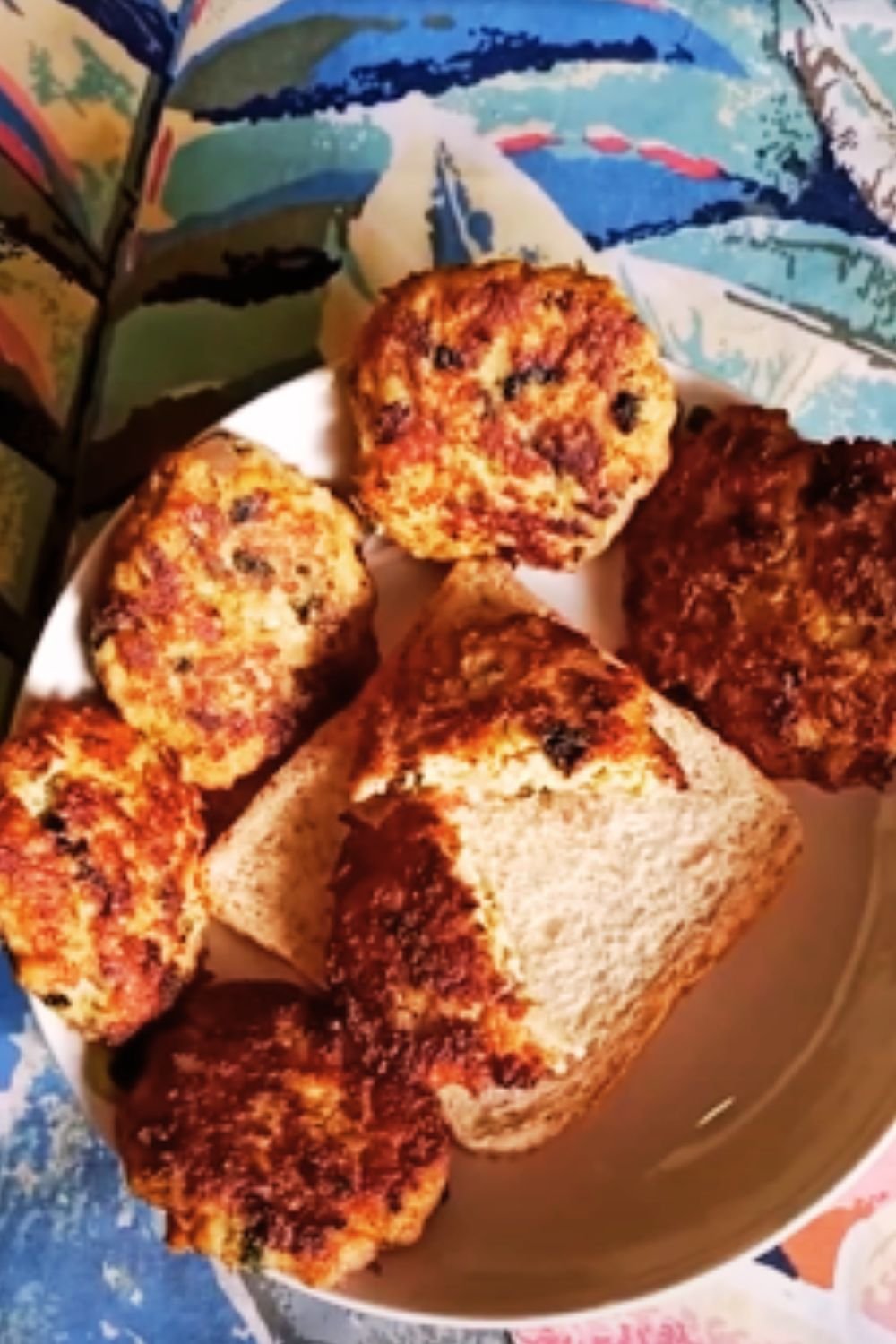There’s something undeniably magical about a well-made seafood bisque. As a culinary enthusiast who’s spent years perfecting this classic dish, I can confidently say that few soups rival the luxurious comfort of a creamy crab and shrimp bisque. The rich, velvety texture paired with the sweet, delicate flavors of shellfish creates an experience that feels like a warm hug for your taste buds.
My journey with seafood bisque began during a coastal vacation in Maine, where I first tasted a truly authentic version made by a local chef who had been perfecting his recipe for decades. That single bowl changed everything I thought I knew about soup, and I’ve spent years since then experimenting with variations until landing on this recipe that I’m thrilled to share with you today.
What Makes a Bisque Different from Other Soups?
Before diving into the recipe, let’s clarify what truly makes a bisque special:
Bisque : A smooth, creamy soup traditionally made from puréed shellfish (though vegetable versions exist too)
Chowder : A chunky soup typically containing seafood or vegetables in a cream base
Stock : The flavorful liquid made by simmering seafood shells, vegetables, and aromatics
Roux : A mixture of fat and flour used to thicken the bisque
What sets a proper bisque apart is not just its ingredients but its technique. Traditionally, the shellfish shells are ground to a fine paste (hence the name “bisque,” which relates to “bis cuits” or “twice cooked”). Modern interpretations often skip this step, but I incorporate elements of this traditional technique to extract maximum flavor.
The Secret to Restaurant-Quality Bisque at Home
I’ve discovered that the difference between a good homemade bisque and a restaurant-quality one comes down to three critical elements:
- Building a proper seafood stock: This cannot be rushed or substituted
- Balancing the flavors: Sweet, savory, acidic notes must all be present
- Getting the texture just right: Silky smooth but with body and substance
In this recipe, I’ll guide you through each of these elements with tips I’ve learned through countless batches of bisque-making over the years.
Essential Ingredients

The quality of your seafood matters tremendously in this recipe. Here’s what you’ll need:
| Ingredient | Quantity | Notes |
|---|---|---|
| Fresh crab meat | 1 pound | Lump crab preferred; claw meat works too |
| Large shrimp | 1 pound | Shell-on, preferably wild-caught |
| Heavy cream | 2 cups | Full-fat provides the best texture |
| Fish stock | 4 cups | Homemade if possible (instructions below) |
| Shallots | 3 medium | Finely diced |
| Celery | 2 stalks | Finely diced |
| Carrot | 1 medium | Finely diced |
| Garlic | 4 cloves | Minced |
| Tomato paste | 2 tablespoons | Adds depth and color |
| Brandy or Cognac | ¼ cup | For deglazing |
| Unsalted butter | 4 tablespoons | For the roux |
| All-purpose flour | ¼ cup | For the roux |
| Bay leaves | 2 | Fresh or dried |
| Fresh thyme | 3 sprigs | Or 1 teaspoon dried |
| Cayenne pepper | ¼ teaspoon | Adjust to taste |
| Paprika | 1 teaspoon | Sweet or smoked works well |
| Lemon | 1 | For juice and zest |
| Fresh chives | For garnish | Finely chopped |
| Salt and white pepper | To taste | White pepper keeps the color pristine |
Creating the Perfect Seafood Stock
The foundation of any excellent bisque is its stock. Here’s my method for creating a rich seafood stock that will elevate your bisque to restaurant quality:
- Remove shells from the shrimp, leaving tails on about 6 shrimp for garnish if desired
- Rinse shells thoroughly and reserve shrimp meat in refrigerator
- In a large pot, heat 1 tablespoon olive oil over medium heat
- Add shrimp shells and cook until pink and fragrant (about 3-4 minutes)
- Add 1 diced onion, 1 diced carrot, 1 diced celery stalk, and 2 smashed garlic cloves
- Pour in 5 cups of water, a splash of white wine, 1 bay leaf, a few peppercorns, and a pinch of salt
- Bring to a boil, then reduce heat and simmer for 45 minutes
- Strain through a fine-mesh sieve, pressing on solids to extract maximum flavor
- You should have about 4 cups of stock; if not, add water to make 4 cups
This homemade stock can be made up to 2 days ahead and refrigerated, or frozen for up to 3 months.
Step-by-Step Bisque Preparation

Step 1: Prepare Your Mise en Place
Having everything ready before you start cooking is essential for this recipe:
- Dice all vegetables finely and uniformly
- Measure out all liquids and spices
- Have your seafood cleaned and ready
- Set out all equipment including immersion blender or standard blender
Step 2: Build the Flavor Base
- In a large, heavy-bottomed pot or Dutch oven, melt 2 tablespoons of butter over medium heat
- Add shallots, celery, and carrot; sauté until softened but not browned (about 5 minutes)
- Add garlic and cook for another minute until fragrant
- Stir in tomato paste and cook for 2 minutes, allowing it to caramelize slightly
- Add paprika and cayenne pepper, stirring to coat vegetables
Step 3: Deglaze and Develop Flavors
- Pour in brandy or cognac, scraping up any browned bits from the bottom of the pot
- Allow alcohol to reduce by half
- Add bay leaves and thyme sprigs
- Pour in your prepared seafood stock
- Bring to a simmer and cook for 20 minutes, allowing flavors to meld
Step 4: Create the Perfect Texture
- Remove bay leaves and thyme stems
- Using an immersion blender, purée the soup until smooth (alternatively, carefully transfer to a blender in batches)
- In a separate small pot, make a roux by melting remaining 2 tablespoons butter over medium heat
- Whisk in flour and cook for 2 minutes until it smells nutty but hasn’t browned
- Slowly whisk the roux into the puréed soup
- Simmer for 10 minutes, stirring occasionally, until slightly thickened
Step 5: Add Seafood and Finish
- Reduce heat to low and stir in heavy cream
- Season raw shrimp with salt and pepper, then add to the bisque
- Cook gently for 2-3 minutes until shrimp just turns pink
- Gently fold in crab meat, being careful not to break up the lumps
- Heat through for 1-2 minutes without boiling
- Add lemon zest and 1-2 tablespoons of fresh lemon juice
- Taste and adjust seasoning with salt and white pepper
Serving Suggestions

A beautiful presentation elevates this luxurious dish even further:
- Serve in warmed bowls to maintain temperature
- Garnish with a few reserved whole shrimp with tails, if desired
- Sprinkle with finely chopped fresh chives
- Add a small drizzle of cream in a decorative pattern
- For added luxury, float a small piece of butter on top of each serving
- Accompany with crusty artisan bread or buttery crackers
This bisque pairs wonderfully with a crisp green salad dressed with a light vinaigrette to balance the richness.
Variations and Customizations
Over the years, I’ve experimented with numerous variations on this classic recipe. Here are some of my favorite ways to customize it:
Seafood Substitutions
| Original | Substitution | Notes |
|---|---|---|
| Lump crab | King crab legs | More indulgent, sweeter flavor |
| Shrimp | Lobster meat | Creates a traditional lobster bisque |
| Mixed | Add scallops | Adds a delicate sweetness |
| All shellfish | Add white fish | More economical option |
Dietary Adaptations
- Dairy-free version: Substitute coconut cream for heavy cream (adds a subtle tropical note that works surprisingly well)
- Gluten-free version: Use rice flour instead of all-purpose flour for the roux
- Lower calorie option: Use half-and-half instead of heavy cream and reduce butter by half
Flavor Enhancements
- Add 1 tablespoon of tomato paste for a more pronounced color
- Include a pinch of saffron for an elegant touch
- Try adding fresh tarragon instead of thyme for a French-inspired flavor
- For a Cajun twist, add Old Bay seasoning and increase the cayenne pepper
Make-Ahead and Storage Tips
One of the beauties of this bisque is that it can be partially prepared ahead of time:
- The stock can be made up to 3 days ahead and refrigerated
- The base of the bisque (before adding seafood and cream) can be made 1 day ahead
- Complete bisque will keep refrigerated for up to 2 days
- Freeze only the base without cream or seafood for up to 3 months
When reheating:
- Do so gently over low heat
- Stir frequently to prevent scorching
- Add a splash of cream if it has thickened too much during storage
Troubleshooting Common Issues
| Problem | Cause | Solution |
|---|---|---|
| Bisque is too thin | Insufficient roux or reduced too little | Make a small amount of additional roux and whisk in, or continue simmering to reduce |
| Bisque is too thick | Too much flour or over-reduced | Add more stock or cream, a little at a time |
| Seafood is tough | Overcooked shrimp | Add seafood at the very end, cook just until done |
| Bisque is grainy | Cream curdled or blending issue | Lower heat when adding cream; never boil after adding it; blend longer for smoother texture |
| Flavor is bland | Insufficient seasoning or stock | Add more salt, a touch of lemon, or a splash of sherry |
Why This Recipe Works
After many iterations, I can confidently say this recipe succeeds where many homemade bisques fail because:
- We take the time to make a proper stock from scratch
- The balance of aromatics provides depth without overwhelming the seafood
- The technique of puréeing vegetables adds body without excessive starch
- Adding the seafood at the end preserves its delicate texture and flavor
- The touch of acid from lemon brightens all the flavors
Questions and Answers
Q: Can I make this bisque without an immersion blender?
A: Absolutely! A standard blender works well, but be careful when blending hot liquids. Work in batches, filling the blender no more than halfway, and place a kitchen towel over the lid while blending to prevent accidents.
Q: Is there a substitute for the brandy or cognac?
A: Yes, you can use dry white wine, sherry, or even apple juice with a splash of white wine vinegar. Each will change the flavor profile slightly, but all work well.
Q: How can I tell when the shrimp are perfectly cooked?
A: Shrimp cook very quickly! They’re done as soon as they turn pink and opaque, usually 2-3 minutes depending on size. They’ll form a “C” shape when perfectly cooked; if they curl into an “O” shape, they’re overcooked.
Q: Can I use pre-made seafood stock?
A: While homemade stock is ideal, good-quality store-bought seafood stock works as a time-saving alternative. Avoid chicken stock if possible, as it lacks the distinctive seafood flavor essential to bisque.
Q: Is this recipe suitable for special occasions?
A: This bisque is perfect for special occasions! It’s elegant enough for holiday dinners, romantic meals, or impressive dinner parties. You can prepare most components ahead of time, allowing you to focus on your guests.
Q: How can I make this more economical?
A: Seafood can be expensive, but there are ways to economize: use frozen seafood (thawed properly), substitute some of the crab with less expensive white fish, watch for sales, or ask your fishmonger for “seafood scraps” that are perfect for making stock.
A Final Note
Creating this bisque takes some time and attention, but the process is as rewarding as the result. There’s something deeply satisfying about transforming simple ingredients into something so luxurious. As you ladle this velvety bisque into bowls and watch your dinner companions take their first spoonful, I guarantee you’ll feel the pride that comes from creating something truly special.
I hope this recipe becomes a treasured addition to your collection, just as it has been to mine. Whether you make it for a cozy night in or a special celebration, this creamy crab and shrimp bisque is sure to create memorable moments around your table.


